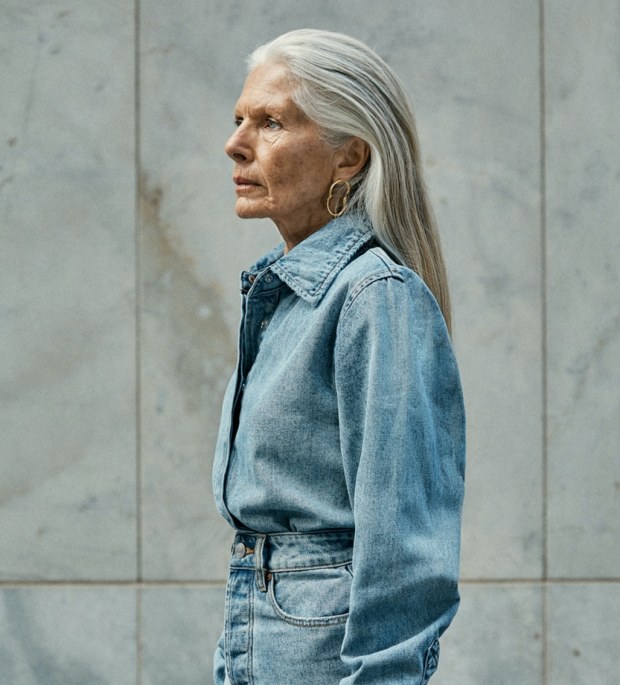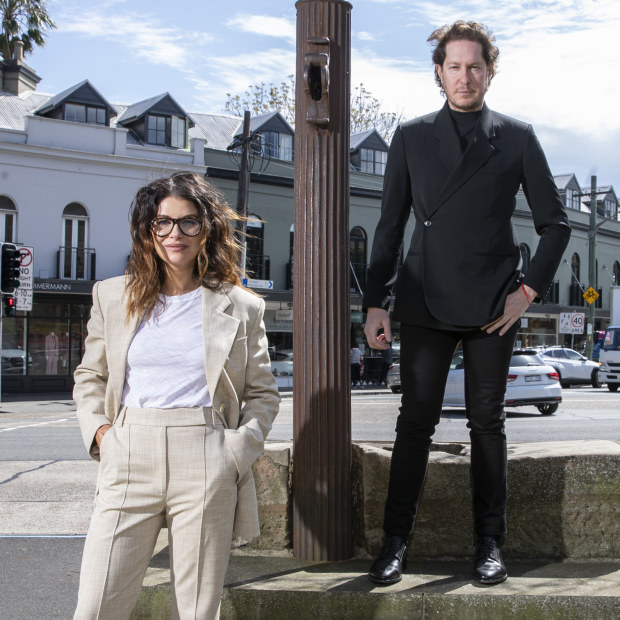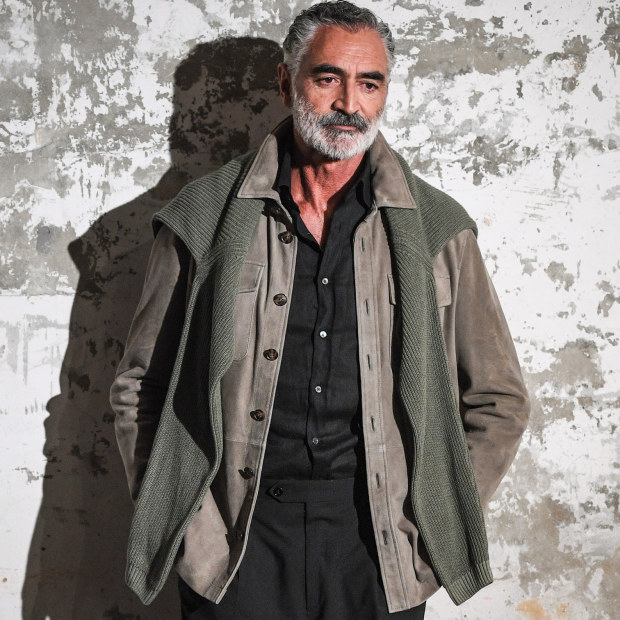The brand’s latest campaign, launched this week, is led by supermodel Paulina Porizkova, who, at 56, is at the forefront of age-positive casting.
Post-lockdown recovery has workers well placed to cash in on labour shortages by demanding higher wages
Why senior fashion models are increasingly in demand
The industry that put its clotheshorses out to pasture at 25 has just discovered that diversity sells – younger ones are a turn-off, but those older are not.
Heather Inwood was 33 when she was told her modelling career was over because she was too old.
“To be honest, I didn’t worry about it too much at the time,” she says of her abrupt retirement from the industry in 1988
Because that was what you were told in those days. But deep down, I always thought it was wrong. I would look at cosmetics ads for anti-ageing cream and the women in them were really girls, 16 and 17 years old. What on earth do they know about anti-ageing?”
Heather Inwood in a Camilla and Marc campaign. “Being over 40 used to be a sort of death sentence in the fashion industry ... I don’t think that is the case any more,” Inwood says.
Inwood is now 65, and modelling once more. Three years ago, she joined Silver Fox Management, an agency dedicated to models over 30. Since then, she has appeared in campaigns for Camilla Franks, The Iconic and Nice Martin, and is a frequent face of Camilla and Marc campaigns.
“I can see a lot of change,” she says of the industry. “And I’m hoping it won’t be a fad. The thing is, women my age have money, we want to dress well, we are interested in fashion. Being over 40 used to be a sort of death sentence in the fashion industry. But I don’t think that is the case any more.”
There was a time when models were signifiers of an ideal, and not emblematic of actual customers. This was the accepted wisdom – that fashion was aspirational, not accessible, and by its very exclusivity, alluring.
That is changing.
Age positive
A glimpse at the runways of Afterpay Australian Fashion Week, a scan of a fashion magazine, a scroll of Instagram – all confirm that models, once paragons of unattainable, unreasonable beauty, are now a decidedly more diverse bunch.
Brigitte Warne is the co-founder of Inwood’s agency, Silver Fox Management. The former model started the agency when she saw a gap in the market for older models.
“I was talking to a friend who told me it was very hard to find more mature models,” she says. “She told me that ‘mature’ in the modelling world means 25 years old. That was how old I was at the time! I thought, there must be a market here.” That friend, Georgia Branch, is now Warne’s business partner and co-founder.
Age-positive casting is a burgeoning part of the modelling industry. Warne’s agency represents models from 30 to 90, and while initially, both scouting for models and finding jobs was difficult (“At the start, we mainly got insurance, superannuation and pharmaceutical clients,” says 31-year-old Warne), it is now in the business of fashion, matching its models with brands such as Mecca, Country Road, American Apparel and more.
Many of the agency’s models took time away from the industry, like Inwood, and its roster is diverse, with plus-size models and a wide range of ethnicities. “We’ve been on a real education journey with our clients,” says Warne. “And we have found that while you won’t lose a young consumer if you use older models, you will lose the older customer if you only use younger models.”
Camilla Freeman-Topper, left, and Marc Freeman of Camilla and Marc. Louie Douvis
Camilla Freeman-Topper, creative director of Camilla and Marc, has long been a champion of diverse casting. The brand’s latest campaign, launched this week, is led by supermodel Paulina Porizkova, who, at 56, is at the forefront of age-positive casting. Previous campaigns have featured actor Rachel Ward (64) and Inwood.
“It has always been our quest to make women feel great,” says Freeman-Topper. “We really do think that fashion is about identity, and that is different for everyone. Our customer base is broad and so our models should reflect that.”
Porizkova has appeared on the covers of Vogue, ELLE, Harper’s Bazaar and more, and in 1988 was awarded a $US6 million contract from Estée Lauder in 1988 (at that time, a record). At 56, she is experiencing a resurgence in her career she did not anticipate.
“I never imagined I’d be modelling in my 50s,” says Porizkova. “Partly because it’s always been an age-limited career, like athletics or dance, but mostly because I sincerely hoped I would have no desire or need to do so.”
Porizkova was encouraged to maintain her career, though, when she saw the lack of visibility of women her age. “Modelling now, at the age of 56, with an unaltered face and body, suddenly seems significant,” she says.
“I see the distinct lack of visibility of women my age looking their age, proudly and beautifully. And this is the gap I’m stepping into: not to shame women who refuse to age, but to offer an alternative. Self-acceptance is, after all, the one thing age has over youth.”
“It feels important to honour women at every stage of life,” says Freeman-Topper. “Perfection is not real life. Our campaigns show wrinkles, they show grey hair. Paulina is objectively beautiful, but she is also a different kind of beautiful to what we have been shown previously.”
Older men
Menswear designer Christian Kimber tells a similar story: his customers are not “boys”, he says, so neither are his models.
“Our client is an older man,” says Kimber. “He doesn’t look at young men and think, ‘I wish that was me.’ It’s quite the opposite, actually: we hear from our younger clients that they want to see older men in our advertising, because that is aspirational to them. They are thinking, ‘I want to be that guy when I grow up.’”
For Kimber, the decision to cast models aged mainly over 40 is not to spark conversation or broaden the definition of masculinity, but simply to reflect his customer base. “I did not set out to be different or special,” he says. “We portray the men who buy our clothes. It’s as simple as that.”
A model at Christian Kimber’s runway show at Afterpay Australian Fashion Week in June.
Diversity and inclusion casting is big business in the modelling world, and not simply when it comes to age. Beginning with The Body Shop and Dove in the 1990s, which championed body positivity in its models and campaigns, plus-size modelling is now part of the fashion industry at large.
Vogue has featured plus-size model Ashley Graham on its cover, and even Chanel now uses plus-size models on its runways. Race and religious diversity came next, and then ability-based diversity. Now, The Body Shop, which led the way with its diversity casting in the 1990s, features non-binary influencer Deni Todorovicin its campaigns.
Part of the change, says Warne, is that social media has taught us the importance of storytelling and the impact of influencers, who have shown a different way to connect with consumers. “It’s not just about ‘the face’ or ‘the body’ any more,” she says.
“Advertisers and customers want to see personality, confidence, a real person behind the facade. And part of that is life experience: older models have that.”
Beauty and fashion brands have embraced non-models in their campaigns: Estée Lauder recently signed inaugural poet Amanda Gorman and IMG Models signed Kamala Harris’ stepdaughter, Ella Emhoff, a design student.
“For us, it’s important to show more than just a pretty face,” says Freeman-Topper. “I mean, there is no denying that someone like Heather is beautiful. But we want to reveal women with a story, women with characteristics that I want to exemplify.
“I want to uplift women and show them at different stages of life. It looks great but also, it feels like the right thing to do.”
Shocking practices exposed in Australia’s cosmetic surgery industry | Four Corners



